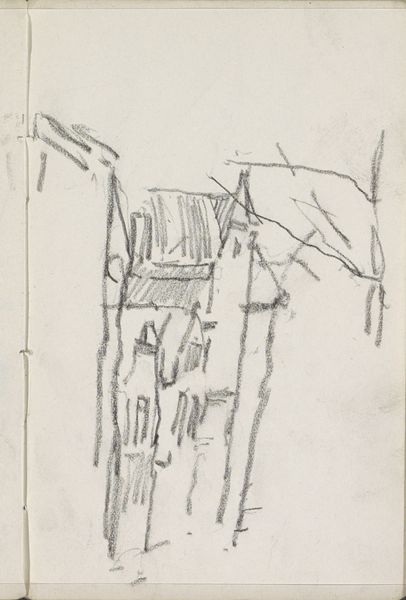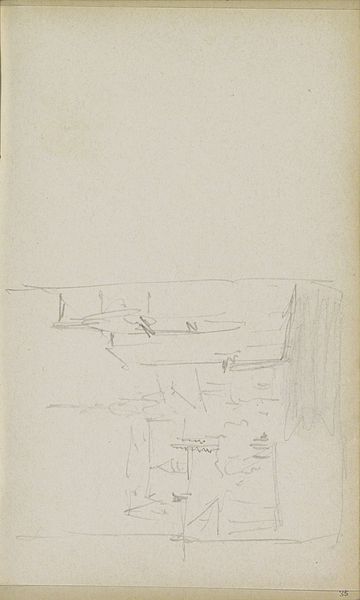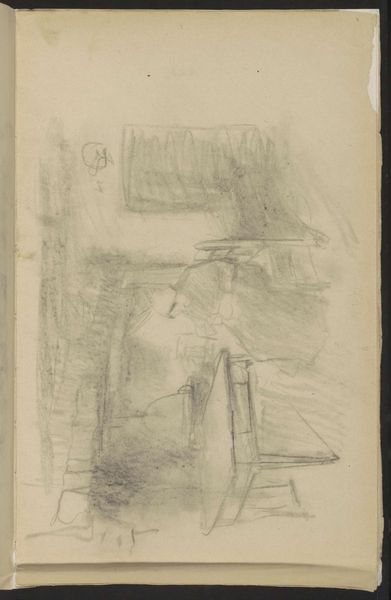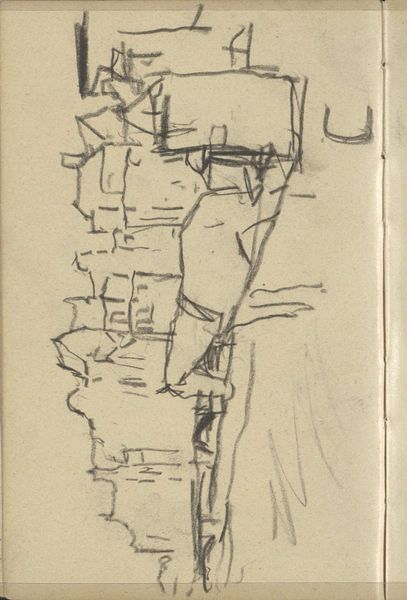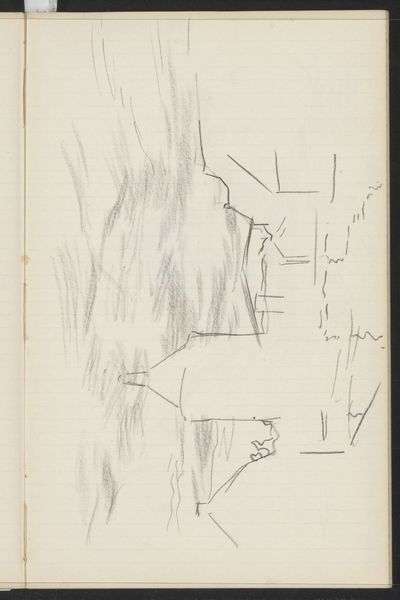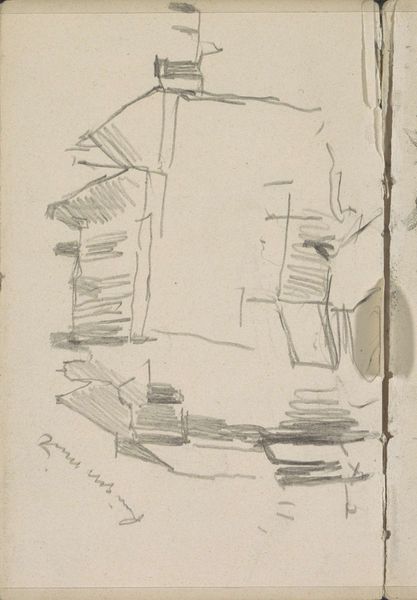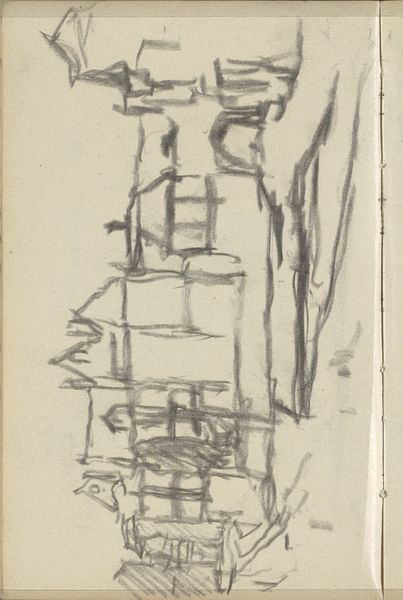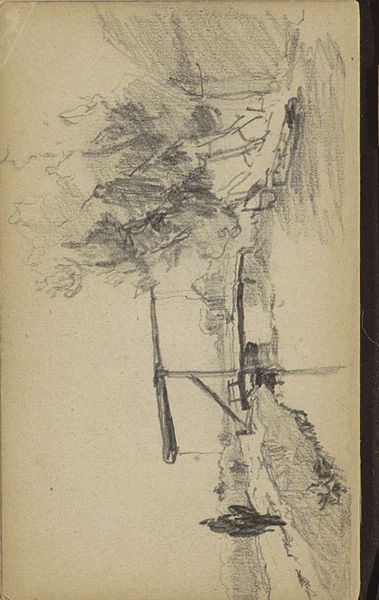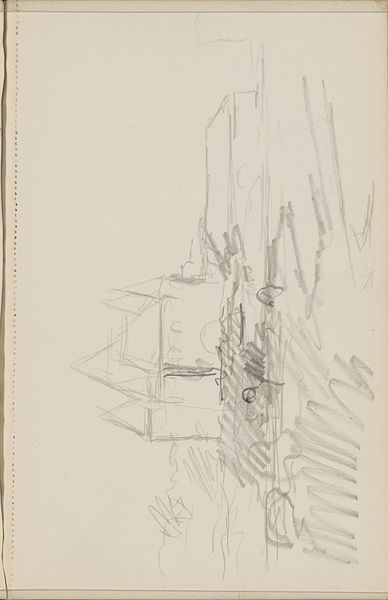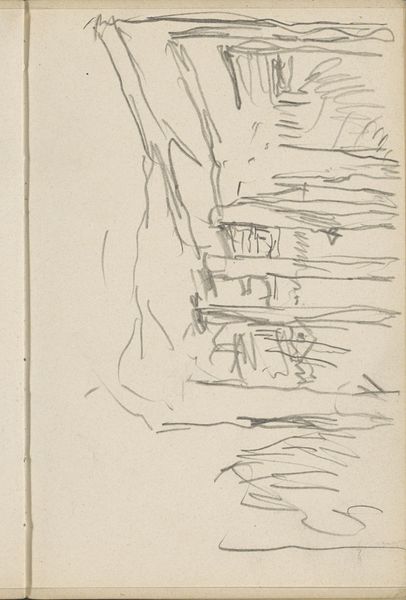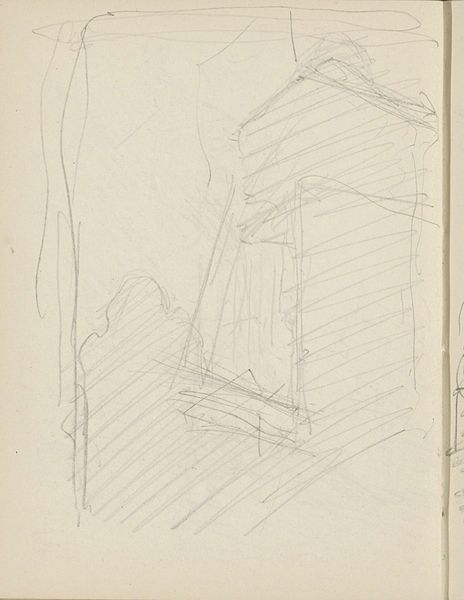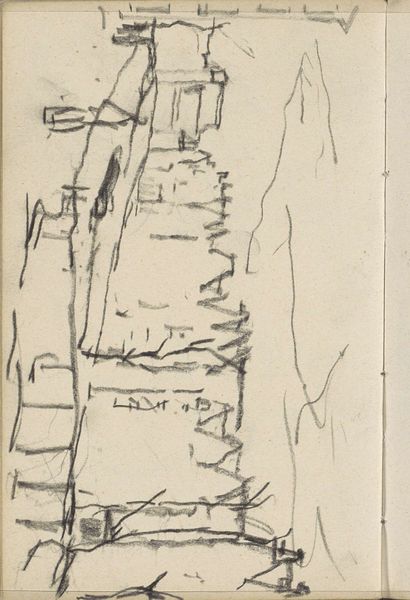
Copyright: Rijks Museum: Open Domain
Curator: Ah yes, "Gezicht in Amsterdam," a drawing made around 1910 by George Hendrik Breitner. It seems quite raw and immediate, rendered in pencil and ink. Editor: Yes, it has a very unfinished, almost frantic feel to it. Looking at the loose linework depicting the street, what can we really read into it? Curator: I'm intrigued by the visible process itself, wouldn't you agree? It feels less about accurately representing Amsterdam and more about the act of capturing a fleeting impression. Breitner’s choice of such accessible and readily available materials - pencil and ink – hints at the democratisation of art-making. Editor: Democratisation in what sense? Curator: Consider the societal changes around 1910. Increased industrialization, mass production…the "means" of making art became increasingly available and therefore altered its very nature and potential audience, from handcrafted exclusivity to mass production of art prints. Breitner’s quick, sketch-like quality then, can be understood as the embrace of “new media.” And look at his rapid strokes - isn't this also his "labor", or artistic method? Editor: So you're suggesting the artwork itself documents not just the scene but the artist’s labor? The social and cultural context directly influenced his art? Curator: Precisely. It reflects both Breitner’s labor and is made of easily consumed resources that are now “elevated” as a work of art. It begs us to question the relationship between everyday materials and aesthetic expression. Editor: I never considered those economic influences. That gives me a whole new way to understand not only the subject, but also the production of artwork and artist decisions. Thanks! Curator: Absolutely! It’s about recognizing art is never created in a vacuum. There's always material and contextual weight that informs every line.
Comments
No comments
Be the first to comment and join the conversation on the ultimate creative platform.
